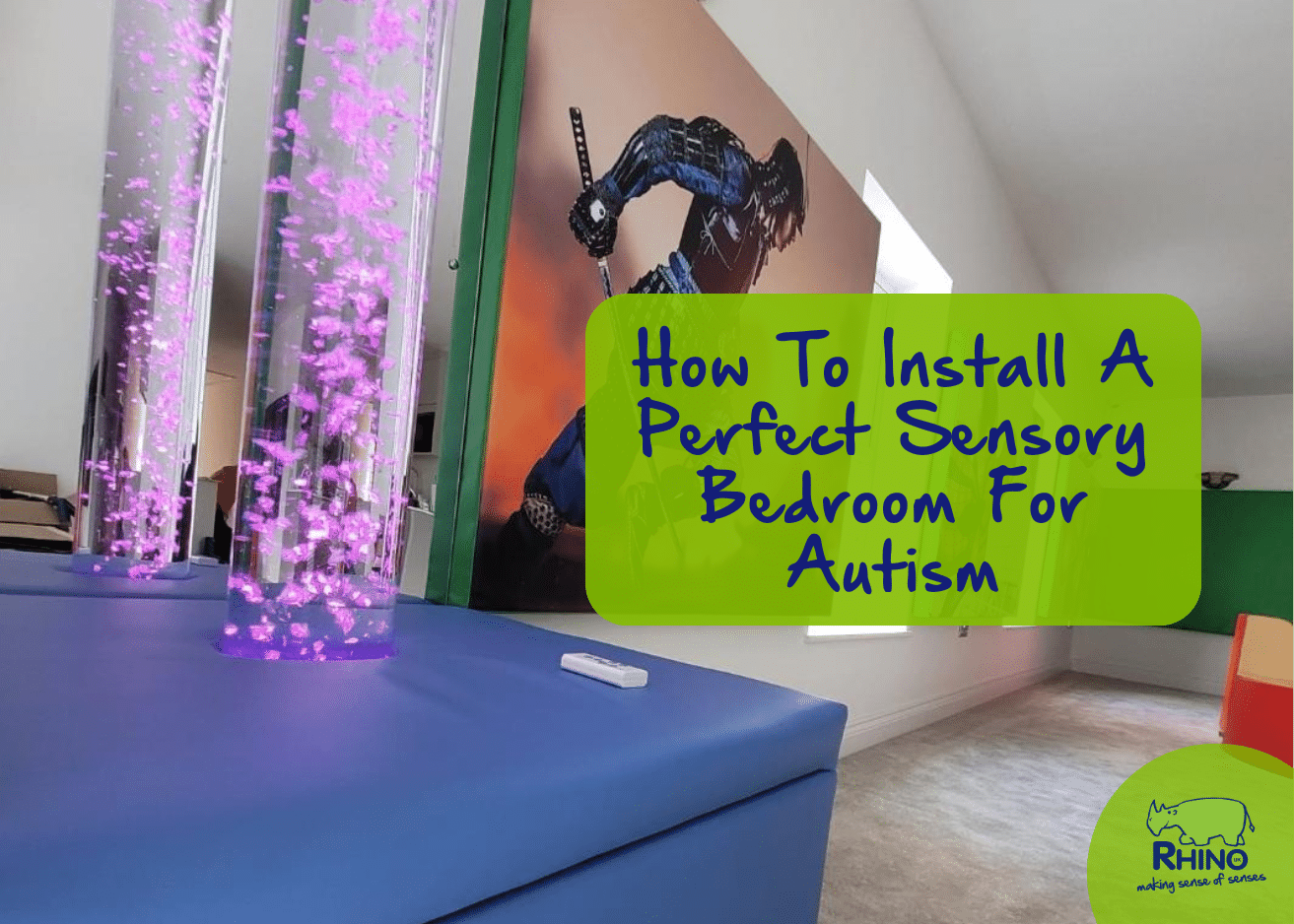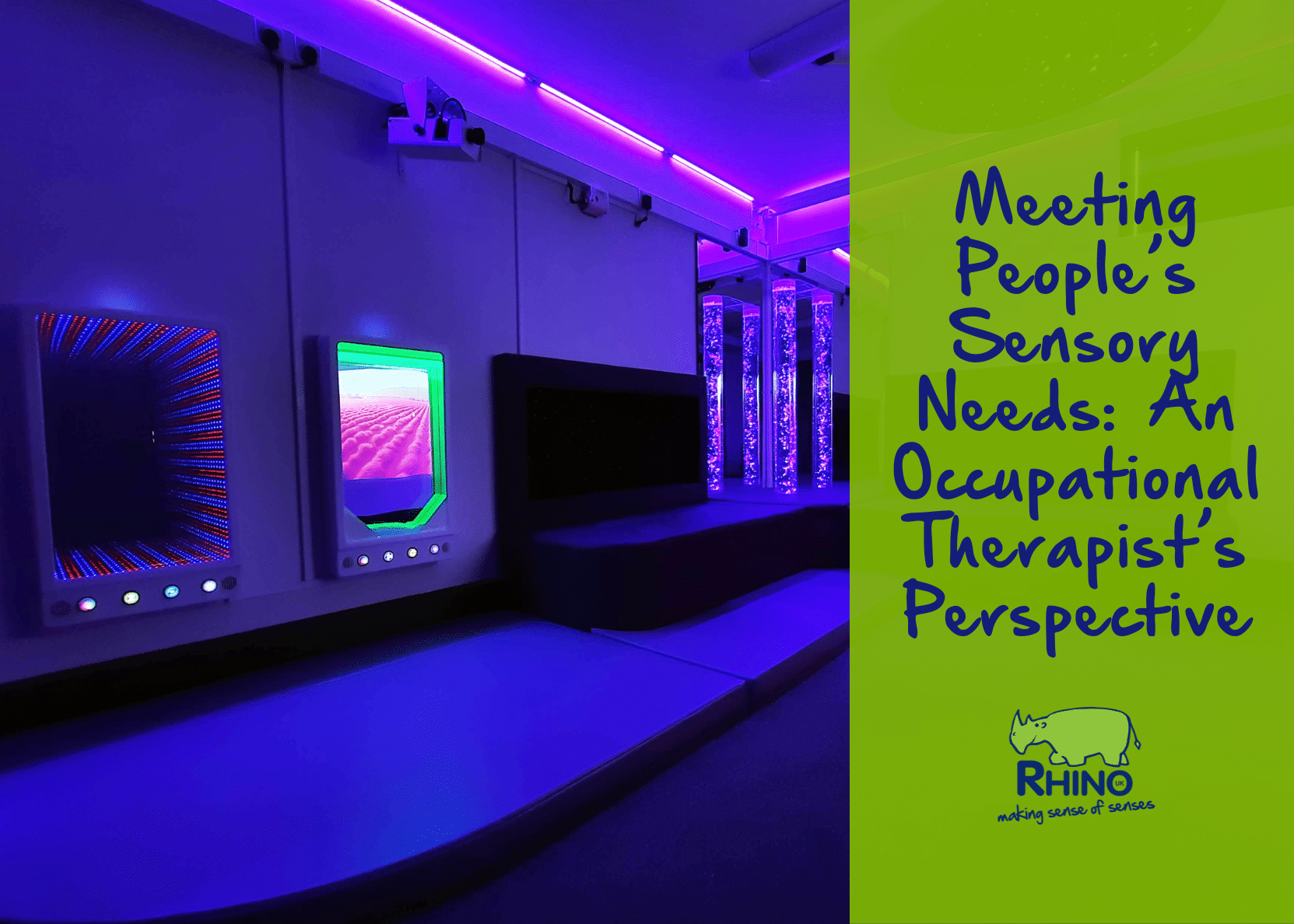Bedrooms are safe havens for sleep, comfort and relaxation. But did you know that 80% of children with autism struggle to get a restful night’s sleep, leading them to feel tired, irritable, and vulnerable to sensory overloads?
According to the National Autistic Society, one reason why autistic people struggle to sleep is ‘sensory differences’ – e.g. increased sensitivity to light and sounds. Because of this, we believe it’s really important to design bedrooms around your child’s sensory preferences.
Keep reading to find out how you can create the perfect sensory bedroom for autism.

Mapping Out Your Bedroom
Nowadays, bedrooms aren’t only used for sleeping. They also double as playrooms, study rooms and social spaces. And while it’s great to have a multi-functional space, it can quickly become a chaotic jumble of stimuli.
To combat this, we recommend that you map out your bedroom. It’s a simple and effective way of organizing chaotic bedroom stimuli to create a balanced sensory space. See our top room-mapping recommendations below:
- Sleep: Keep your bed away from doors (noise) and windows (light), and so one side of the bed runs along a wall (for positioning)
- Study: If you have a desk, place it under or next to a window to make the most of the daylight (visual stimulation).
- Play: Make sure toys can be easily tidied away into storage containers. It’s even better if the containers are transparent so you can see what’s inside them.

Colours
We’ve spoken before about which colours are best for a sensory room. And our advice isn’t too different when you’re decorating a sensory bedroom for autism.
Neutral, cool colours are best for walls. Greens, blues, and purples are all calming shades that provide just enough stimulation to regulate visual senses. Beiges, greys and darker creams can also create calming atmospheres.
However, you should avoid bright colours (reds, yellows, whites) and patterned wallpapers as they are highly stimulating. They’re more likely to alert your senses, which is the last thing you want to do before winding down for bed.

What about Wall Padding?
Wall padding is a practical way to make your bedroom soft, safe and accessible for those with a higher scope of need.
Our wall padding is tailor-made by our in-house upholstery team and comes in a range of calming colours that look great on sensory bedroom walls.
Our most popular bedroom padding colour is ice blue, but we’re also big fans of lavender, cream and sand. Discover more about our padding colours in our handy colour guide.

Lighting
Lighting is an effective way of instantly transforming your bedroom into a relaxing sensory paradise. The soft glow from sensory lights is distracting but not overstimulating, making it a simple tonic for bedtime meltdowns and scary monsters who lurk under the bed.
Simple sensory lighting solutions include:
- Install LED Wall Wash strips across the tops of bedroom walls to bathe them in a calming sensory glow.
- Add Fibre Optic Carpet to a wall or a Fibre Optic Curtain around your bed so that you can enjoy their twinkling, starry night effect.
- Shine a Sensory Projector onto the wall beside your bed to create a slow-moving, distracting dreamscape.
It’s also essential to protect your bedroom against any external light. As a source of light that you can’t control, external lights, like the sun or a streetlamp, can cause unwanted simulation and make it harder to get to sleep.
We’d recommend investing in a blackout blind or blackout curtains so that you can control the room’s brightness.

Sensory Dens
Sensory dens are a simple solution for calming senses and avoiding meltdowns. They provide a personal and controlled environment away from outside stimuli to self-regulate senses and emotions.
Whether it’s a pop-up space or a corner of the room, we think sensory dens are an important element for sensory bedrooms for autism because of the sense of self-confidence they can build in individuals.
Another thing we love about sensory dens is how easy they are to make (see our blog here). We recommend these four items when you’re creating a sensory den:
- Cosy Cushions: You want your den to be as comfortable and comforting as possible. Cushions are nice to sit on, lie on, and cuddle with.
- Ear Defenders: They’re super effective at blocking out noise, which can be one of the most over-simulated senses.
- Fidget Toys: Simple and effective anxiety relievers, perfect for distraction and calming.
- Soft Lighting Effects: Soft mood lighting can transform dark dens into immersive calming zones. Whether that’s from the distracting twinkle from fibre optics or a calming view from a sensory projector.
We hope that you find the information in this blog helpful. If you’d like more information about our sensory services or our sensory bedroom designs, book an appointment with our sensory team. They can help you plan your room, suggest products suited to your needs and budget, and offer expert sensory advice.
Further Information
- Download: Our our free funding guides
- Explore: Use our cost calculator to build your dream sensory room and see how much it might cost
- Book: A free sensory room design appointment



